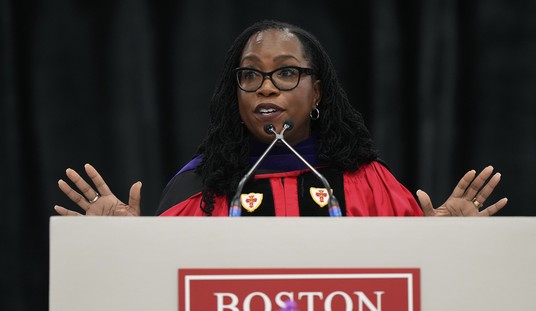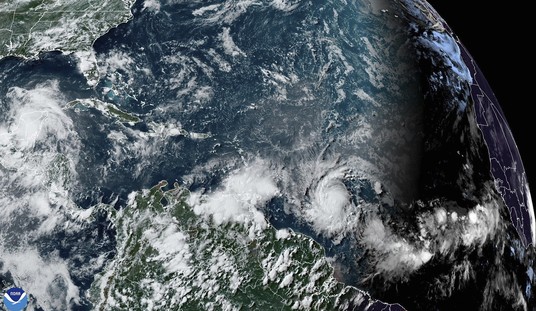The celebrations are already underway in Gaza and Israel, as Hamas has agreed to phase one of Donald Trump's 20-point peace plan: the return of all hostages held by Hamas, living or dead.
Israel will receive the bodies of 28 dead hostages and welcome home 20 Israelis alive, but in an unknown condition.
Meanwhile, Hamas will get back 1,700 Palestinian prisoners, including 250 serving life sentences for the most heinous acts of terrorism.
Greg Roman, the executive director of the Middle East Forum, points out that "Every released prisoner returns to Gaza or the West Bank as a hero, a symbol of resistance, armed with years of additional training and burning with renewed purpose." That's only a slight exaggeration.
Hamas has only agreed to the first phase of Trump's plan. Phases 2-20 are "aspirational," according to Roman. They include a requirement that Hamas disarm, orders for them to leave Gaza, and acceptance of peaceful coexistence. There is no agreement on any of those points, nor is there likely to be. Hamas gets what it most wanted; 1,700 hardened fighters along with some of the most experienced terrorist planners in the world.
Unfortunately, Israel was unable to achieve the destruction of Hamas as Prime Minister Benjamin Netanyahu promised. Now, Netanyahu must deal with the fallout from this agreement, both political and strategic.
History provides a grim preview of what comes next. Yahya Sinwar, the architect of October 7, spent 22 years in Israeli prison studying Hebrew, analyzing Israeli society, planning his revenge. Released in the 2011 Shalit deal among 1,026 other prisoners, he used his freedom to orchestrate the deadliest day in Israel’s history. Today, Israel is releasing another generation of potential Sinwars.
Sinwar was killed in a firefight with IDF forces in October 2024. My guess is that many of the terrorists released as a result of this deal won't see another spring. Israel will see to it that most of those 1,700 prisoners released as part of this deal aren't able to celebrate their freedom for long.
There's also the question of who is "guaranteeing" this deal.
Even more troubling is who’s guaranteeing this arrangement. Turkey openly hosts Hamas leadership in Istanbul, providing sanctuary for terror planning. Qatar has funneled billions to Hamas over years, maintaining the terror infrastructure under humanitarian cover. These aren’t neutral peace brokers—they’re Hamas’s lifelines, ensuring the organization survives this war intact.
Their presence reveals the deal’s true consequences: not Hamas’s elimination, but its preservation. Turkey wants Hamas alive as leverage in regional politics. Qatar’s billions won’t stop; they’ll simply be rebranded as “reconstruction aid” while rebuilding the same tunnel networks Israel just destroyed. In addition, they have demanded the U.S. will provide security guarantees that prevent Israel from going back into Gaza to finish the job.
Another critical stipulation in Trump's peace deal is that Hamas give up control of Gaza. Since the terrorists are the only ones with guns in the enclave, that will prove to be difficult.
What about the proposed International Stabilization Force (ISF)?
The proposed International Stabilization Force promises to succeed where every previous mission has failed. But when has any international force actually confronted Hamas? The United Nations Interim Force in Lebanon watches Hezbollah arm itself in Lebanon. United Nations forces in Syria observe while jihadi forces build bases. These forces inevitably become passive observers, documenting violations while terror groups rearm under their watch.
The UN's Interim Force in Lebanon (UNIFIL) was a complete joke of a force. They stood by after the 2006 war between Hezbollah and Israel as the terrorists rearmed with hundreds of sophisticated missiles, rockets, and heavy weapons. Hezbollah was supposed to be disarmed. Instead, only the "Iron Dome" missile defense system deployed in the last few years in Israel saved the civilian population from considerable harm. Of the thousands of missiles launched at Israeli cities, Iron Dome was able to shoot down the vast majority of them.
Netanyahu got the best deal he could under complicated circumstances. His enemies will say he could have had a similar deal a year ago. But in the last year, the Israelis have decapacitated Hamas and Hezbollah leadership, destroyed their stockpiles of missiles, and pulverized their tunnel systems, as well as severely weakening Iran. It will take both terrorist organizations at least two years and perhaps more to get back to the strength they had before October 7, 2023.
Time is a military asset in a generational war. Netanyahu has given his people the gift of time to fully prepare for the next round.










